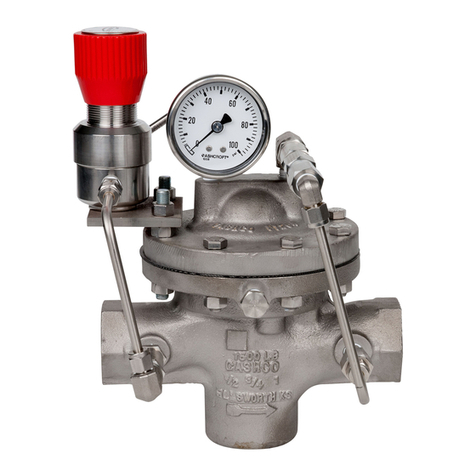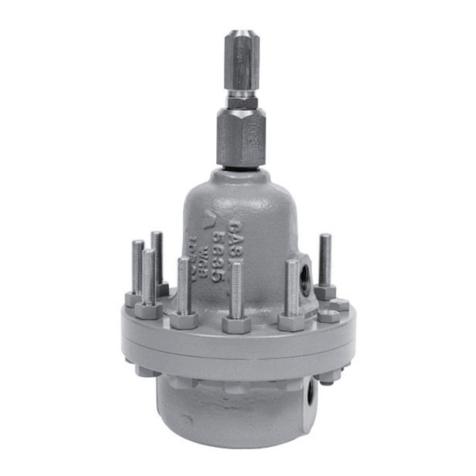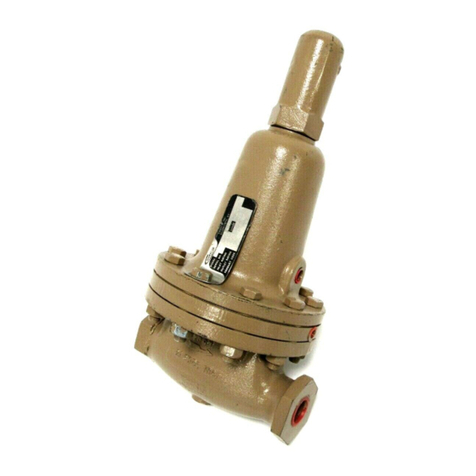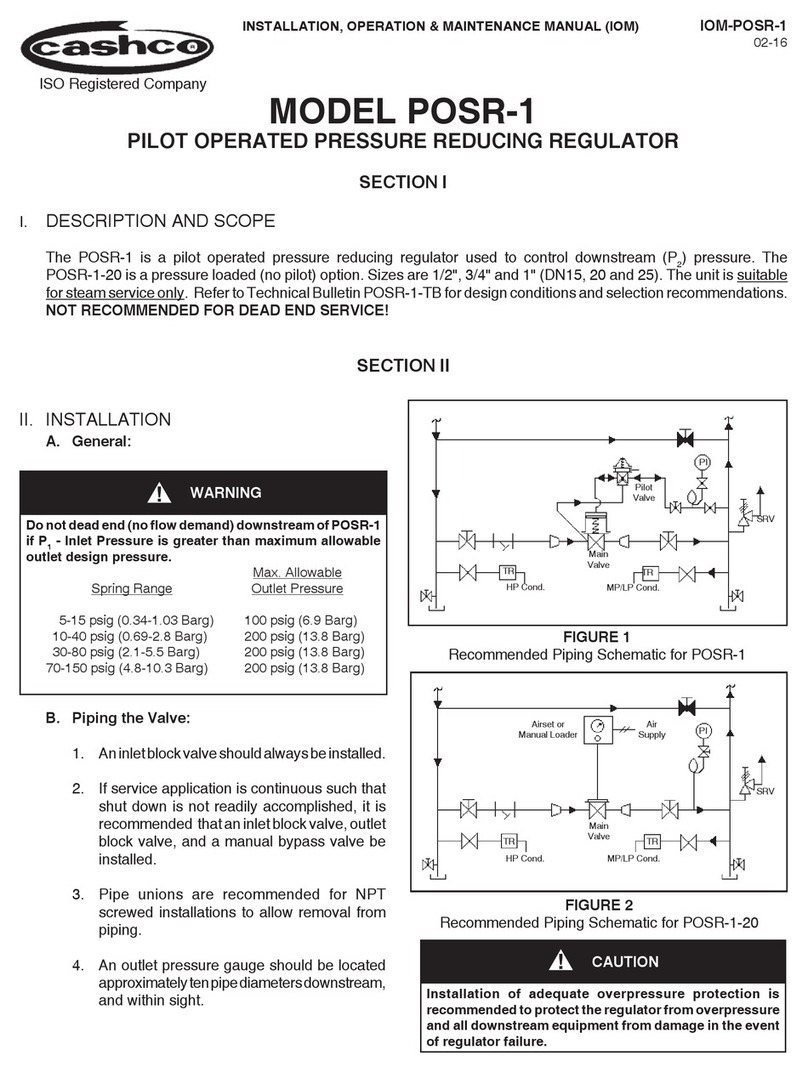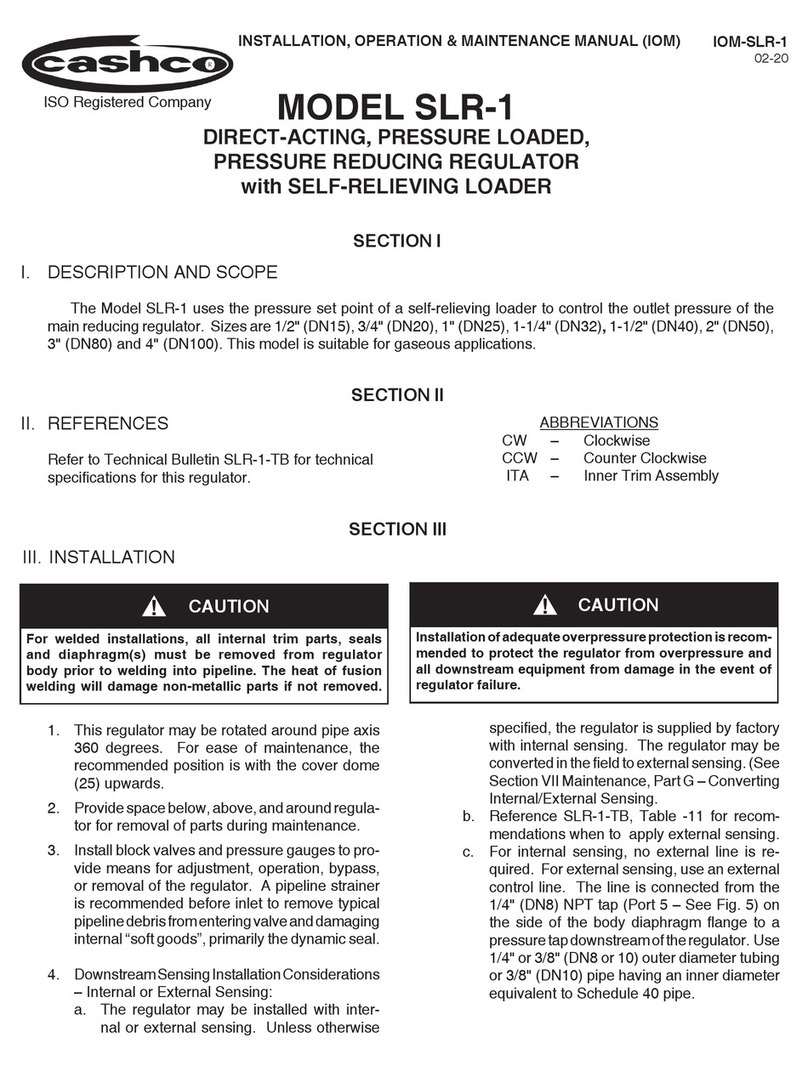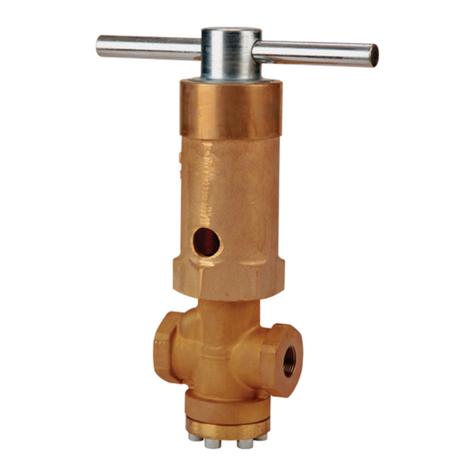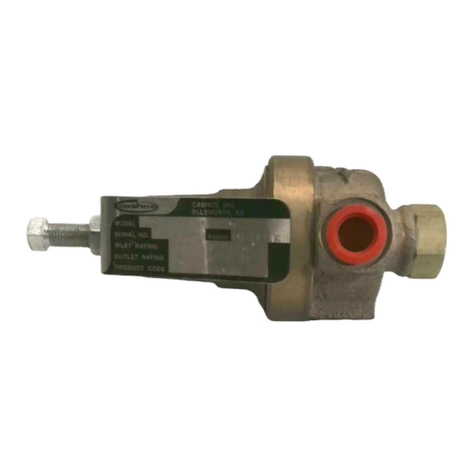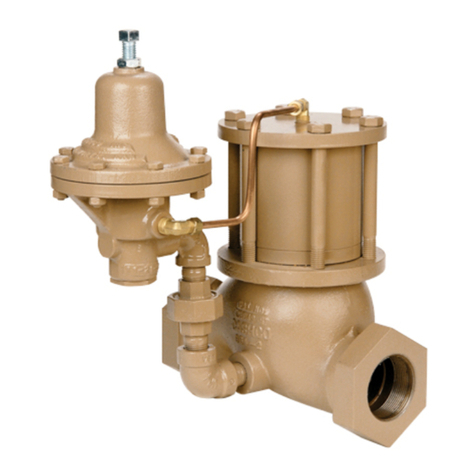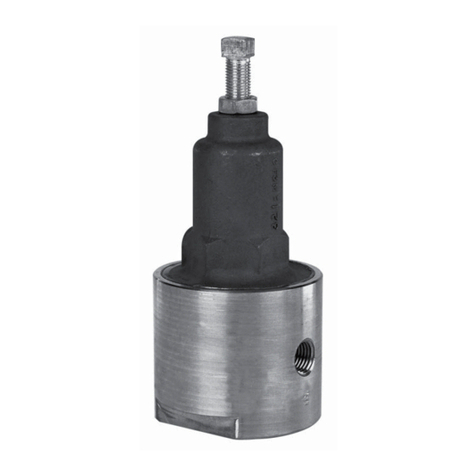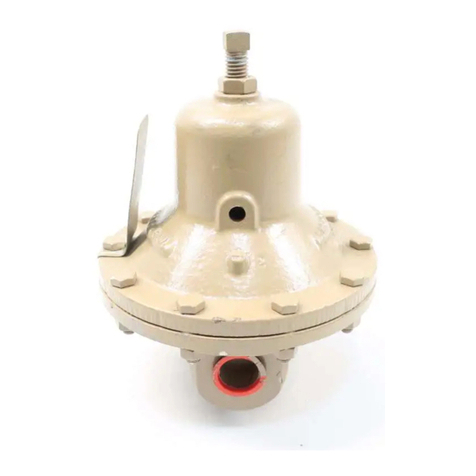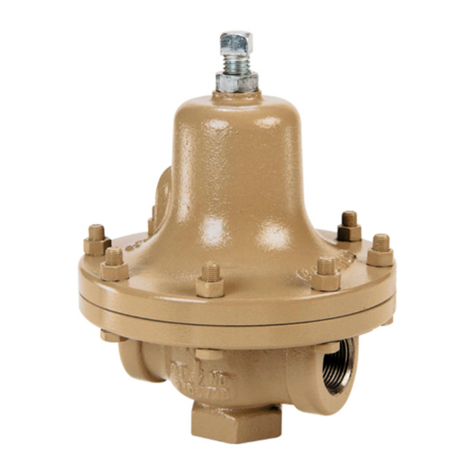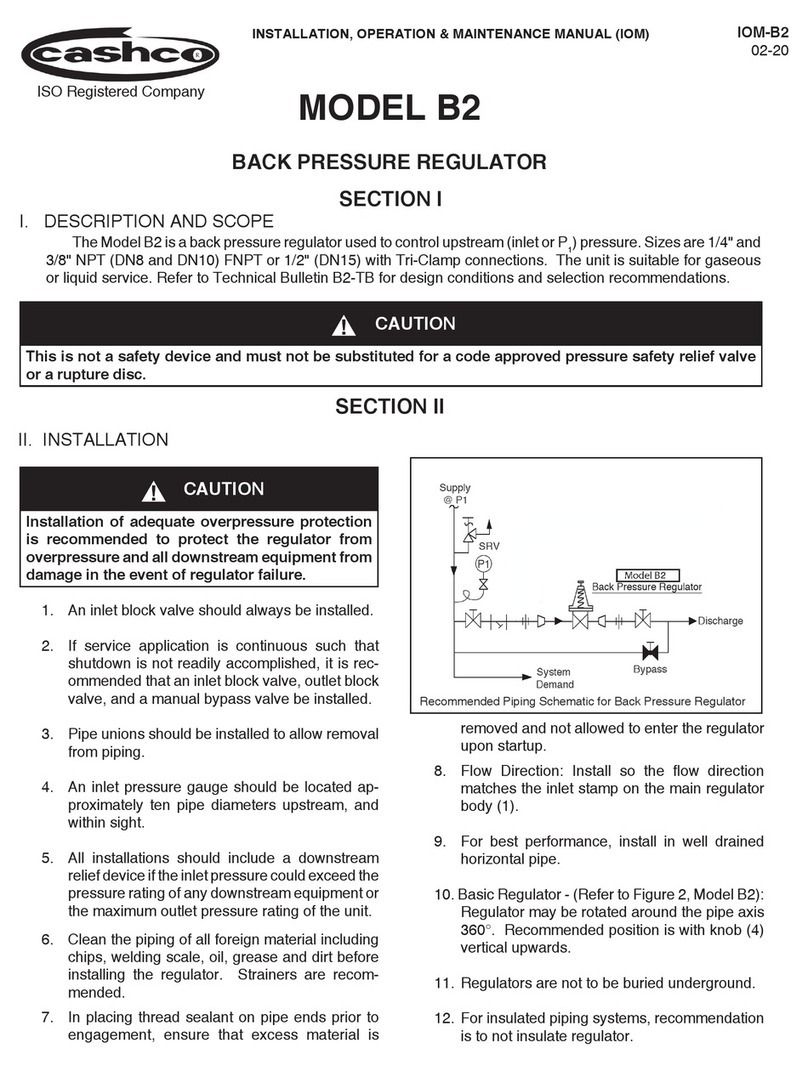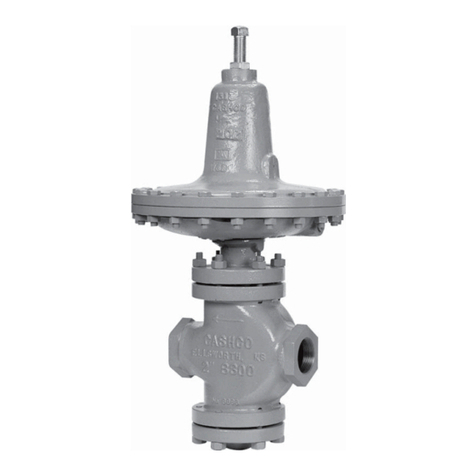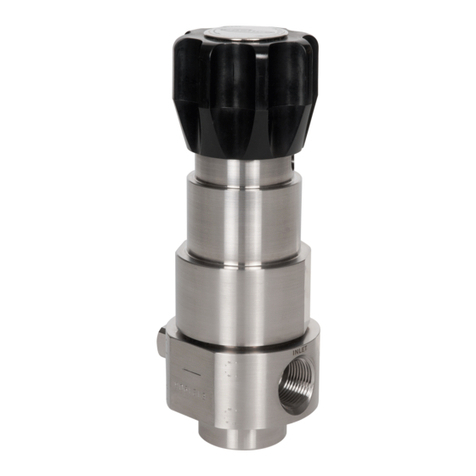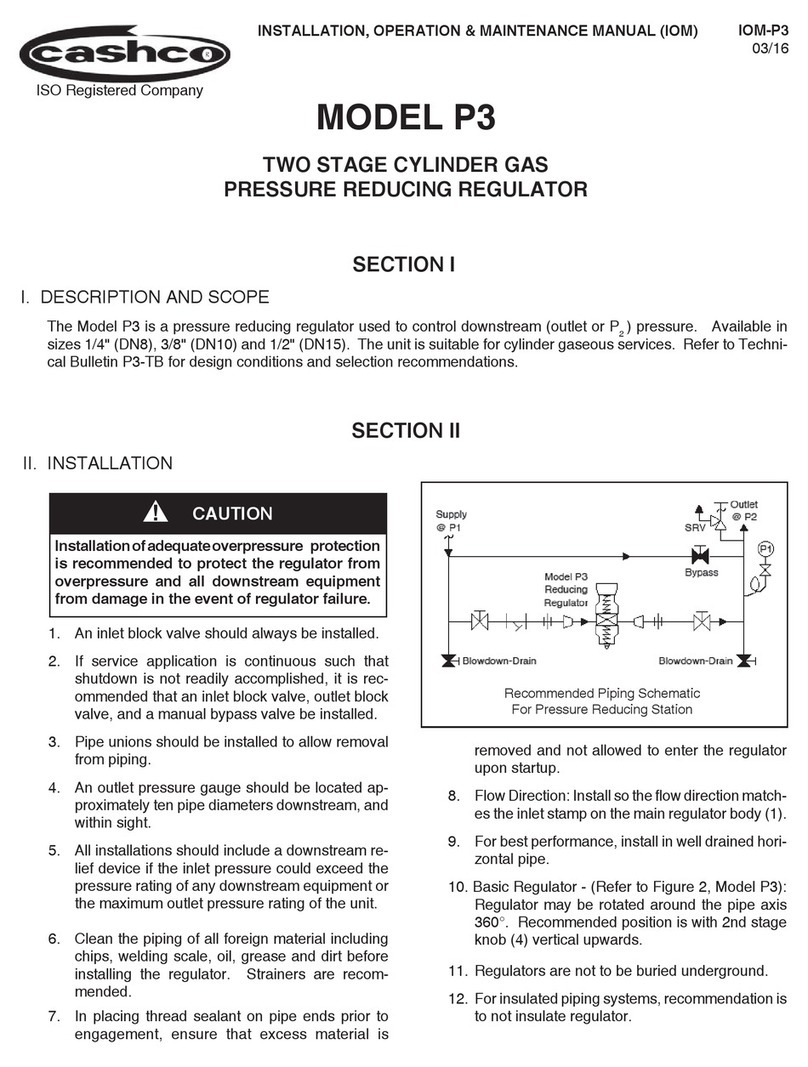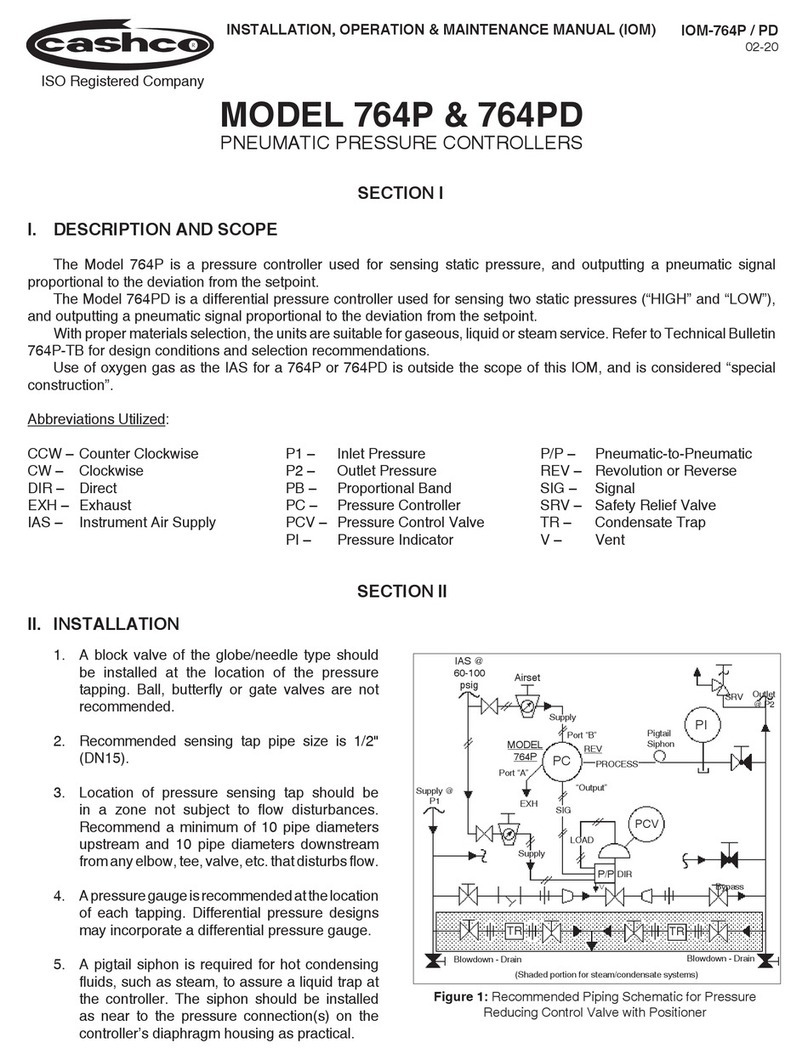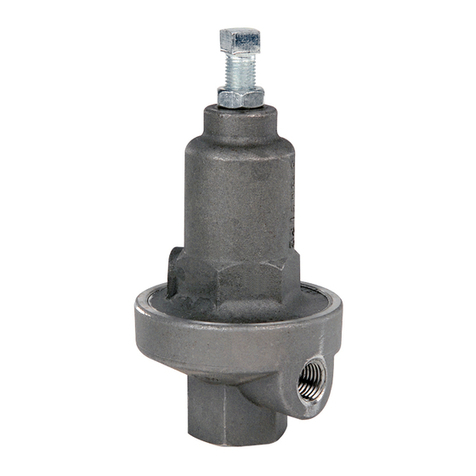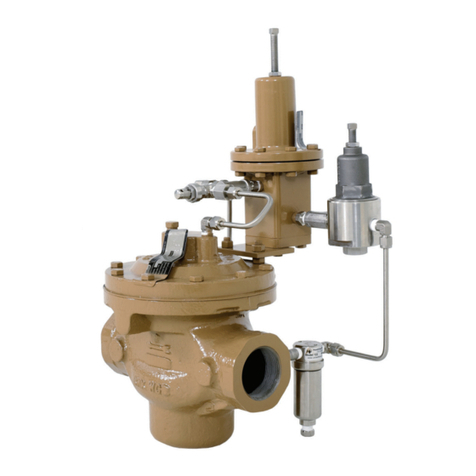
IOM-DA5 7
in vise using same metal bars.
5. Body Sizes 2-1/2" thru 4":
a. Orient plug (20) with threaded end up-
wards, place into a vise, grasping the seat
disc nut (30); tighten the vise lightly, only
enough to "hold" the plug (20) from rotating
out of the vise. Caution: Over-tightening
the vise can distort the seat disc nut (30)
and give bad final torque values.
b. Place a torque wrench on the 3/4" hex
upper end of the plug (20); tighten the
seat disc nut (30) to 40-60 ft-lbs by rotat-
ing CW.
6. Installation of dynamic side seal (27) (See
Figure 1): NOTE: Dynamic side seal (27) for
sizes 2-1/2"-4" is located on the piston/guide
bearing (13). The dynamic side seal can be
installed on a work bench without need of a
vise.
a. Type CP:
1. Stretch o-ring energizer/seal (27.2)
over lower circumference of valve
plug (20), taking care not to "cut"
o-ring energizer/seal (27.4). Using
thumbs, work the o-ring energizer/
seal (27.4) up and into the groove of
the valve plug (20). NOTE: A very
slight amount of fluid and elastomer
compatible lubricant is recommended
as an installation aid. DO NOT “ROLL”
O-RING.
2. Position TFE cap seal (27.1) ring with
rectangular cross-section at lower end
of valve plug (20). Stretch cap seal
(27.1) over lower end of valve plug
(20) using thumbs to work the cap
seal (27.1) onto the valve plug (20).
DO NOT USE A TOOL FOR THIS
STEP. Continue pressing cap seal
(27.1) upwards towards the groove
until the cap seal (27.1) “snaps” into
the groove of the valve plug (20).
b. Type PR:
1. Wrap corrugated metal piston ring
energizer (27.6) over lower circumfer-
ence groove of valve plug (20). Using
thumbs work the energizer (27.6) into
the valve plug (20) groove.
2. Spread a piston ring seal (27.5) and
slide over lower circumference groove
of valve plug (20), taking care not to
“cut” piston ring seal (27.5). Using
thumbs, work the piston ring seal
(27.5) into the groove of the valve plug
(20). Repeat this procedure with a
second piston ring seal (27.5). Orient/
rotate the "splits" in piston ring seals
(27.5) 180° across from each other.
c. Type UC:
1. Stretch u-cup seal (27.3) over upper
circumference of valve plug (20), tak-
ing care not to “cut” u-cup seal (27.3)
on the protruding shelf that is part of
the valve plug's (20) groove. Ensure
that the u-cup seal (27.3) is oriented
with the center-open-upwards as
shown in Figure 1, as the u-cup seal
(27.3) depends upon the P1-Inlet
Pressure to pressure activate the seal
for proper sealing action.
d. Type NO:
1. For “FTC” flow direction applications,
it is not required that a dynamic side
seal (27) be installed. (When included
with the dynamic seal (27), better
guiding of valve plug (20) results.)
Type “NO” dynamic seal (27) means
NO dynamic seal.
2. The more common “FTO Reverse”
flow direction always requires a dy-
namic side seal (27).
7. Place fluid compatible thread anti-seize,
Locktite Corp., "Nickel Anti-Seize", or equal
on threaded portion of diaphragm cap screw
(7), sizes 1-1/4" and 1-1/2"; or, threaded post
portion of valve plug (20), sizes 1/2" – 1" and
2-1/2" – 4". ( NOTE: Regulators cleaned for
oxygen service should use Fisher Scientific
Co., "Fluorolube GR-362", or equal.)
8. Body sizes 2-1/2" thru 4".
a. Place o-ring lower stem seal (14.3) over
upper-end of plug (20) and into groove
in plug (20).
b. Place properly oriented piston/guide bear-
ing (13) over upper-end of plug (20) and
into position on plug (20).
c. Place o-ring middle seal (14.2) over upper-
end of plug (20) and into groove of piston/
guide bearing (13).
9. Body sizes 1/2" thru 2".
Place new o-ring middle stem seal (14.2) into
groove of valve plug (20) upper surface.
10. Position lower diaphragm pusher plate (10) on/
over upper end of valve plug (20) properly ori-
ented. For composition diaphragm construc-
tion the “tongue and groove” “ridge” should
be on upper side, “flat” side downwards. For
